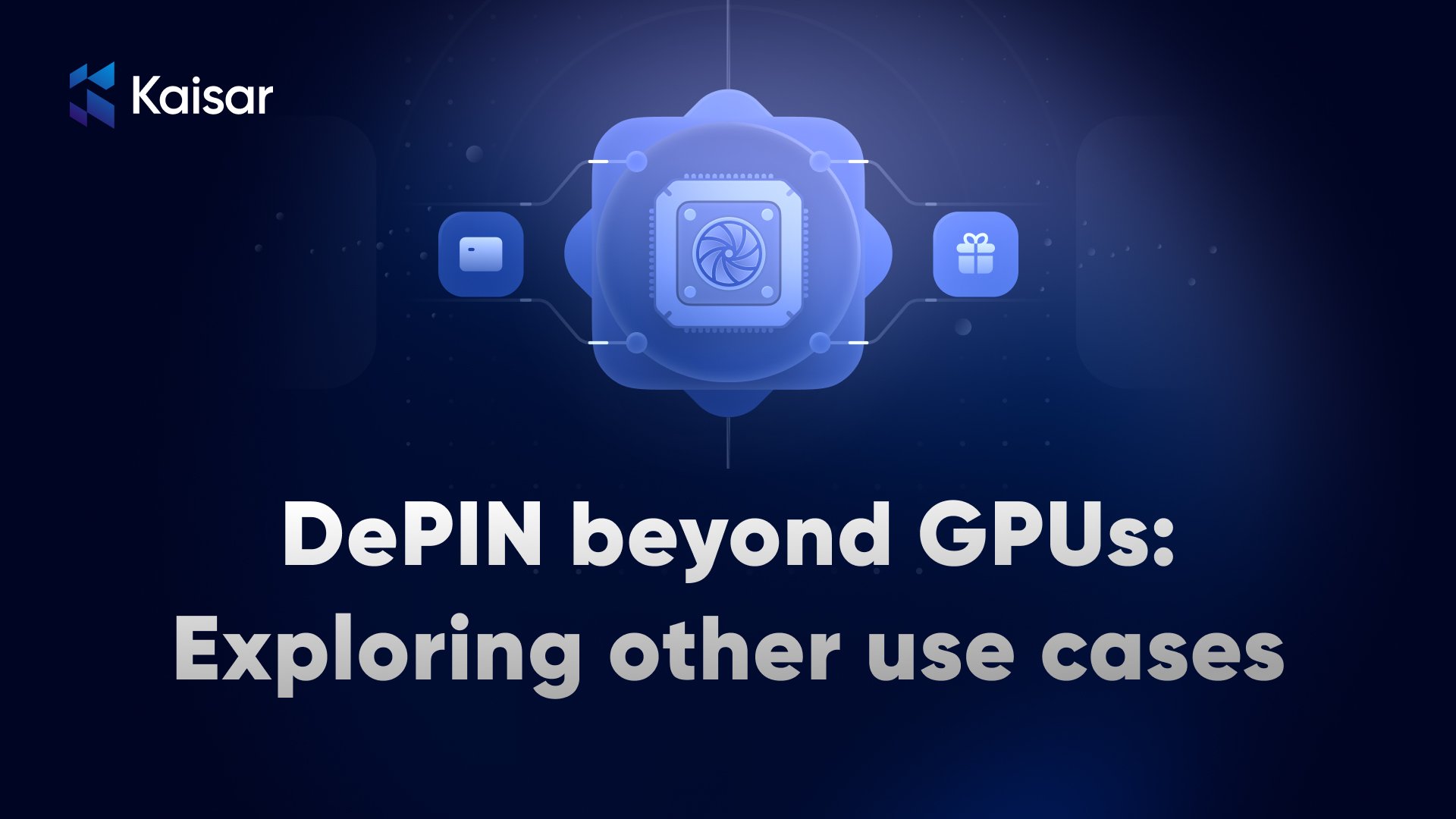Decentralized Physical Infrastructure Networks (DePIN) has changed the way we approach distributed computing. While most attention has focused on pooling and monetizing GPU and CPU resources for various workloads, DePIN offers a much broader scope. This article explores DePIN in applications such as storage, energy grids, IoT devices, and telecommunications.
DePIN Overview
DePIN utilizes decentralized networks and blockchain technology for optimizing infrastructure usage and distribution. Originally, DePIN was solely used for GPU sharing, to support AI or deep learning workloads.
The principles behind DePIN i.e., decentralization, resource efficiency, and permissionless access – can easily be applied to other areas. DePIN not only decentralizes ownership and operation of infrastructure, but improves resilience, cost efficiency, and accessibility in many sectors.
DePIN also works to eliminate single points of failure, helping signal a shift towards a more democratic and equitable distribution of both digital and physical resources.
DePIN Use Cases
Decentralized Storage Networks
Centralized cloud storage companies (e.g. Amazon S3, Google Cloud Storage, and Microsoft Azure) are dominant players in the storage space. While these companies provide value as centralized cloud storages, they also present challenges – high cost, single points of failure, and data privacy concerns. Data breaches, and regulations only make matters worse for sensitive information.
Decentralized storage solutions (e.g. Filecoin, Arweave, and Storj) let users rent out additional, unused disk space, to either consumers or businesses. Storage networks based on DePIN models will distribute a consumers data on multiple nodes. As a result, cost will decrease along with redundancy and security, thereby reducing reliance on centralized cloud providers.
Decentralized Wireless and Telecommunications Networks
Telecommunications infrastructure typically requires bulky capital investments, centralized ownership, and has slow expansion into rural or underserved areas. While pricing for overall telecom services is a subjective matter high costs of infrastructure and licensing raises issues and limits innovation and affordability.
DePIN give individual users the capability to launch smaller, low-cost access points to network. They will introduce crypto incentives for participation, which can be used as payments. DePIN based models for decentralized cellular networks will also build networks in the neighbourhood to improve barriers to internet services at economical access points.
Decentralized Energy Grids
Energy distribution is dominated by large utility companies, which results in system inefficiencies, blackouts, and lack of accessibility and flexibility. Market manipulation and system vulnerabilities result from a centralized system which relies on a small number of central plants. Consumers have little control over sources of energy, or ultimately pricing.
Decentralized energy solutions built on DePIN utilize blockchain along with peer-to-peer (P2P) trading to create decentralized energy markets. Individuals generate and sell excess energy through microgrids so that they can further expand energy independence and resilience.
Decentralized IoT Networks
IoT networks relying on centralized cloud platforms for its operations has costly implementation, and serious risks associated with data privacy. Most IoT deployments require investment in significant infrastructure, which limits scalability.
DePIN network-based IoT networks allow data flow and a relationship between sensors through decentralized infrastructure. Individuals and organizations donate network coverage for IoT devices and earn a token in return. This model helps structural organizations in security by removing centralized intermediaries and reducing connectivity issues.
Conclusion
DePIN networks democratize access to cloud computing at a lower cost to the consumer, bypassing traditional providers like AWS or Google Cloud. Additionally, decentralized compute networks offer greater accessibility to small businesses, independent researchers, and educational institutions, without relying on centralized infrastructure.
DePIN is already implementing decentralization and staking in storage, telecommunications, energy, IoT, computing, and content delivery. With through decentralization of ownership and operation, DePIN creates new efficiency, accessibility, and security in a range of industries.
As blockchain and decentralized technologies continue to develop, the range of applications for DePIN will likely expand, democratizing and changing the way we build and utilize networks of physical infrastructure globally. From energy, AI, healthcare, and smart cities, DePIN is paving the way to a more decentralized future.
Join Kaisar Network
Ready to scale your projects with affordable GPU resources? Join Kaisar Network today and harness the power of DePIN. Visit kaisar.io to get started!

